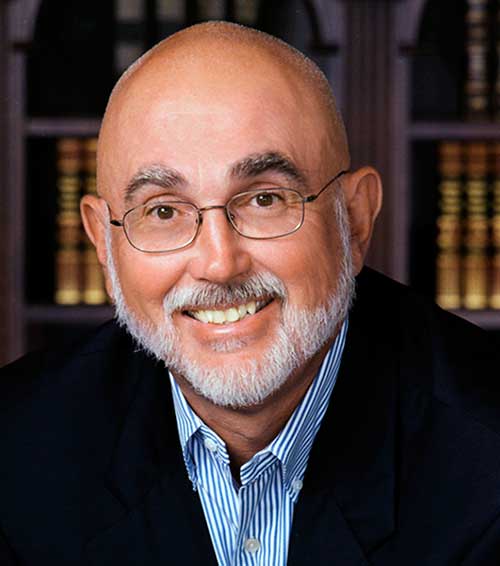

Financial Advisors Benefit When They Add FCMO Marketing Experts To Their Firms
Why are so many Registered Investment Advisors (RIAs) responsible for less than $100 million of Assets Under Management (AUM)?
Let me answer a question with a question. How many financial advisor marketing hats can the principals of an RIA wear and still be successful growing their firms? What if the senior planning, investment, risk management, and marketing professional are all the same person?
Discover some brilliant financial advisor marketing tips in our newest guide!
What if this financial advisor is an expert planning and investment professional, but is not that enamored with marketing and sales? In fact, many of these professionals may not even view marketing and sales as the highest and best use of their time. They would prefer to spend their time producing financial plans and managing money.
Therein lies the problem. Financial advisors who wear too many hats struggle to grow after their businesses reach a certain AUM: $25 million, $50 million, or even $100 million.
This article is not for financial advisors who have built lifestyle businesses and are not interested in growing their firms.
We will describe an FCMO (Fractional Chief Marketing Officer) solution for this frequent business challenge.
This article will cover the following topics:
- What are the principal marketing challenges that face many smaller RIAs?
- What are the key marketing functions that must be addressed by financial advisors?
- What are the key sales functions that must be addressed by financial advisors?
- How do the financial advisors’ interest and skills impact the process?
- How does a financial advisor’s marketing budget impact the solution?
- How does an FCMO help solve the problem?
- What are the principal benefits of an FCMO?
What are the principal marketing challenges that face many smaller RIAs?
We have described one of the challenges. The owners of the RIAs have to wear too many hats: Marketing, sales, planning, investing, administration, and servicing.
The more time owners spend managing and servicing the less time they have for marketing and sales activities.
A volatile market is the best time for financial advisors to be marketing their services. But, at the same time, the advisors’ clients are going to be demanding more servicing time. Consequently, this opportunity passes them by because there is only so much time in a day.
What are the key marketing functions that must be addressed by financial advisors?
There are several key marketing functions that must be addressed:
- The development of services that resonate with investors.
- Pricing models for the RIAs’ services.
- Marketing literature that delivers the right information to investors.
- A competitive website that is based on intuitive information.
- Internet visibility that produces website visitors.
- A website process that converts visitors to leads.
- An effective sales process for converting leads into clients.
What are the key sales functions that must be addressed by financial advisors?
The sales function is relatively straightforward. The financial advisors must be skilled at converting leads into prospects and prospects into revenue producing clients.
The challenge is the amount of competition that most financial advisors face when they market their services to individuals and their families.
The more work that is done by the financial advisors’ websites when they deliver the right features, benefits, and differentiating characteristics, the less pressure there is on financial advisors to be skilled sales professionals.
How do the financial advisors’ interest and skills impact the process?
Some financial advisors are CFP®s who are expert financial planners. They are very skilled at producing financial, college, retirement, estate, and charitable tax plans. Other financial advisors are CFAs who are very skilled at analyzing investment opportunities and managing client assets. And, some financial advisors are both.
Many of these financial advisors are more inclined to work with current clients than they are to commit their time and money to marketing and sales. These advisors tend to rely on referrals for new clients, even if they are few and far between. In fact, referrals may not even offset client losses due to relocation, terminations, and other reasons. Generating referrals may also take some sophisticated marketing and sales strategies. Waiting for the telephone to ring is not a marketing strategy.
There are proactive networking strategies that will produce leads. But, these require marketing and sales support to be effective.
How does a financial advisor’s budget impact marketing and sales?
One of the key indicators for financial advisors’ marketing and sales successes is their budget for these activities. In some cases, money that is committed to marketing and sales is coming right out of the financial advisors’ pockets. Consequently, many financial advisors are reluctant to commit money to marketing and sales because there is no guarantee that these efforts will produce enough results to offset the expense.
There is always the possibility that committing budget dollars to marketing and sales will not work. In particular when the financial advisors are not skilled at sales (converting leads into prospects and prospects into revenue producing clients).
How does an FCMO help solve the problem?
What if your firm outsources your marketing needs to a Fractional Chief Marketing Officer who works exclusively for a handful independent financial advisors?
Right up front your marketing expenses could be 80% lower because you are paying a retainer based fixed fee, but there are no salaries, taxes, benefits, or bonuses.
Your outsourced Fractional Chief Marketing Officer would be responsible for all of your digital marketing activities starting with strategy, plus: Brand awareness, logo, Internet visibility, website traffic, website content, lead generation, presentations, and collateral material.
The FCMO could be responsible for all of your product marketing, pricing, and sales strategies.
The FCMO could also be responsible for your sales tools: Powerpoint presentation, Fact Sheet, features & benefits, differentiating characteristics.
The right FCMO could even help financial advisors fine-tune their sales tactics and skills.
What are the principal benefits of an FCMO?
In a word - growth. Financial advisors that want to grow their firms need all of the expertise and services that FCMO’s are capable of providing.
Second is expense. FCMO’s can provide the marketing expertise that financial advisors need for a fraction of the cost.
Third, FCMO’s who have worked in the financial service industry bring specialized knowledge and experience to the financial advisors’ firms. Based on best practices, these FCMOs already know what is working for other financial advisors.
Fourth, is Return On Investment. The FCMOs’ experience working in the financial service industry can improve the conversion rates of financial advisors. In particular, creating leads and converting them into clients.
Conclusion
Paladin is a digital marketing agency that provides FCMO services to a limited number of independent RIAs. The focus of the services is the Internet that produces brand awareness and qualified leads. However, the services do not stop there. Paladin’s FCMO service also helps advisors convert more leads into prospects and more prospects into clients.

Jack Waymire, BA, MBA
Search Here
Categories
- AI (18)
- blogging (2)
- branding (1)
- content (12)
- custodians (1)
- Digital (436)
- email marketing (3)
- fcmo (2)
- fees (1)
- financial advisor marketing (68)
- Google (3)
- Ideas & Tips (109)
- Investor Experience (7)
- lead generation (7)
- linkedin (1)
- Marketing (488)
- newsletters (1)
- Online Transparency (2)
- podcasting (1)
- search engine optimization (3)
- seo (9)
- Social Media (2)
- video (3)
- Websites (145)
- YouTube channel (2)
Recent Posts
-
 November 24, 2025
November 24, 2025 -

Top 5 Ways Digital Marketing Benefits Financial Advisors Seeking Leads
November 20, 2025 -

Trust Is The Biggest Online Marketing Challenge For Financial Advisors
November 17, 2025 -

Compliant Financial Advisor Bios Using AI Website Builders
October 22, 2025 -


